The Death of the Contact Report?

Friends, it’s been awhile! Since I last posted, I’ve been to a bunch of places, including Minneapolis (twice), Seattle (again), Kentucky (four times!), and Canada. I was preparing a post on the most Frequently Asked Questions I receive as a consultant, but then something inspirational happened this week so I decided to table the original post topic to cover this. Bear with me.
I was invited to speak at APRA Virginia’s 20th anniversary conference in Richmond. Since Virginia is the state I both live and work in, I was very excited to attend and speak. The conference had a fantastic line-up – Jay Frost, David Lawson, and Josh Birkholz were just some of the speakers. However, all of those amazing speakers pale in comparison to the presentation that inspired me.
On Thursday afternoon, Chris Pipkins and Martin O’Donoghue of James Madison University presented. I’ve mentioned Chris a couple times before on this blog. Most notably, I’ve mentioned him for including this slide in many of his presentations:
If you want to know more about the background behind this curious slide, take a look at my Bucket List: Faculty post.
This was my first time meeting Chris’s co-presenter Martin. Martin is the director of AIS at JMU, and I have to say, based on this presentation, if he’s speaking at any conference I’m attending in the future, I’ll be in the audience. I walked in about 20 minutes into their presentation, so I missed some of the lead-in, but here’s the basic idea…
We have a problem with contact reports. Development Officers don’t file them in time, don’t file them at all, or spend too much time describing the meeting location and pleasantries and not enough on the key elements the institution needs to know to move the relationship forward. Researchers often read huge blocks of text to get to the “meat” of the report, if they end up finding it at all.
For those of you reading who aren’t familiar with what a contact report is, it’s a visit report that development officers complete following every visit they have with prospects/donors. They’re asked to go into the prospect’s record in the database and fill in the date of the visit, their own name, and the stage the organization is at with the prospect following the visit. There is also a free-text field for the development officer to enter the full detail of the visit. That section could contain information on how engaged the prospect is with the organization, friends the prospect has who are also related to the organization (fellow alumni, for example), and any ideas in terms of initiatives the prospect might want to support or when s/he might be ready to make a big gift.
There have been some advances made in this area, including voice dictation software, databases that can be accessed online from anywhere or via an iPad, and automated stage updates. Unfortunately, we continue to miss key data elements in our contact reports, and the problem has largely been diagnosed as a training/onboarding issue with Development Officers. If only they could remember to enter all of the necessary information in a timely manner, all of our problems would be solved! We spend a lot of time focusing on behavior modification techniques and/or figuring out how to make uploading these contact reports easier.
No one has really stopped to ask if we can change the format of the contact report.
I’ll give you a moment to take that in.
What if we’ve been asking the wrong question all along? What if the issue isn’t that the development officers aren’t entering the right information or they aren’t entering it quickly enough? What if the issue is that the systems we’ve been using to store this information doesn’t allow the right amount of flexibility for us to codify information on prospects following these highly informative 1:1 meetings?
Martin from JMU asked this question. JMU talked to their database provider, along with a bunch of other sources, and they didn’t find a satisfactory solution. So Martin pulled a Field of Dreams and decided to build it himself.
JMU’s advancement office has something awesome called an innovation grant – anyone with an idea that will benefit the university’s fundraising efforts can pitch their idea and get money/time to develop it. Martin did just that, and with the funding he received, he hired a JMU student to create some magic.
What is this brilliance, you ask? Martin and his all-star student designed an app that asked development officers to use a scale (0-10) to answer eight questions following their visits with prospects. Various questions were piloted throughout the project, with the intention of identifying the questions that JMU most needed to know to advance their relationship with the prospect. Here are the questions they arrived at:
The development officers who piloted this project pulled out the handy-dandy app on their mobile devices following the visit. The format resembles a client satisfaction survey that you might get from a retailer after your most recent shopping experience. While there were a few other questions the development officers also answered, these eight questions were meant to cover the “meaty” parts. JMU’s datanerds now have codifiable field data that will allow them to dynamically change affinity scores, establish a trigger to re-assess capacity ratings, and include the prospects most likely to return to campus in event invitations.
JMU is still working through some hurdles to get all the results back into their database. This is where the call to action came in. At the end of the presentation, Chris Pipkins challenged us all to come together as development professionals and tell the CRM developers that we need more in a contact report. It’s time the format involves more codifiable fields than date, participants, and stage.
Well, friends? What do you think? Is the current format of the contact report working for your organization?
Infiltration!
Hello, friends! It has been way too long since I posted an update, so I promise this one will be a good one!
First off, I’m excited to say that I cleared the 100,000 miles flown mark some time over the summer. By the end of September, I should be past 120,000, so I’m averaging about 10,000 miles a month. Whoa! Of course, Hong Kong skews that a bit- when I remove that trip from the calculations, I’m still at a respectable 8,500 miles per month.
I’m sure many of you attended the APRA conference in July/August. I read many of your excellent blog posts on the conference and felt motivated to post my own. Then August and most of September happened, and I lost my chance…or so I thought! But then last week, I attended the Association of Donor Relations Professionals Conference in Seattle, and my opportunity to reflect on both conferences presented itself.
After countless APRA conferences, this was quite an experience. I felt like an APRA spy. I was warmly welcomed, although this group clearly could tell I wasn’t one of them. They spoke kindly of the researchers in their shops and the experiences of colleagues they knew who attended APRA.
In case you don’t know anything about ADRP, allow me to explain with a comparison statement (you probably haven’t seen one of these since you took the SATs):
Prospect development professionals are to pre-solicitation what donor relations professionals are to post-contribution.
Otherwise, I’ll leave it to the experts to explain more. You can learn all about the pillars of donor relations and all sorts of other fun facts here.
Now that I’ve got the basics covered, I can tell you about what I learned in my role as an APRA Spy. I presented with my colleague and ADRP board member, Eliza McNulty. Our session was called Prospect Research and Donor Relations: Two Sides of the Same Coin. ADRP and APRA are co-sponsoring a replay via webinar in October if you want to join in the conversation.
Our session covered some examples that Eliza and I have experienced of our respective teams/functions working together. As I sat in on conference sessions, I realized that there are some fundamental similarities between our two groups and the work that we do.
Similarities:
1. We both play essential roles in transforming our institutions through philanthropy. As such, we are increasingly being invited to participate in meetings with senior leadership and development officers. If we aren’t invited, we’re feeling more comfortable inviting ourselves. The topic of having a seat at the leadership table was a key theme at APRA, and ADRP was no different. We have great ideas to move donors towards making their next gift and making them feel invested and involved in mission of our institutions, and these ideas should be heard.
2. We both organize our work and work products by segments. Prospect research and portfolio management are much different for prospects at the annual giving level compared to major gifts. Similarly, the acknowledgement, recognition, and reporting process varies for donors who make gifts at these levels. We both factor in total giving over one-time gifts. Some of us don’t quite have this figured out yet and certainly exceptions apply (usually involving senior leadership), but we are all interested in making sure we devote more time strategizing and producing materials on/for prospects and donors at the top of the pyramid.
3. We both care about data. Finally, researchers can be data nerds with someone else in the office! Donor relations professionals are equally passionate about uncovering philanthropic interests and relationships among our top donors and prospects. The mantra “if it isn’t in the database, it didn’t happen” was used frequently at the ADRP conference. They stressed out about information being uploaded as PDFs and being stored in text-heavy contact reports. While I didn’t hear anyone (but me) use the term “codify individual data points,” I could tell they were all thinking it.
By now, you’re thinking, “Bond, this is great! My donor relations office colleagues and I are going to run off together to a deserted island, where we will live happily ever after.” WAIT! Yes, we have a lot in common, and the ADRP folk are lovely people, but there are some differences between prospect development and donor relations professionals that you should consider before running off into the sunset.
Differences:
1. Objective versus emotive. I was in one session where a donor relations professional said she considered her work a success if she “made the donor cry,” Please don’t misunderstand me- they aren’t trying to manipulate or scare donors into making an impact; it’s that they are emotionally invested in the storytelling process. This is dramatically different from prospect research. When I train researchers, I tell them that our role is to be Switzerland. We may care about the donors, but when we report on them, our role is to present the information in a neutral voice. Think of it like news reporting. But, when your audience is the donor, you have the ability to invoke emotion and impact. The role of donor relations professionals in presenting information to the donor is to strengthen the relationship between the institution and the individual.
2. We have different technological tools and skills. The APRA community has been talking about data visualization for dashboards, metrics, and productivity analyses since the early days of prospect management. Tools like Tableau, Advizor, or plain, old-fashioned excel are an everyday part of our routine. Research shops track requests fulfilled, new prospects added to the pipeline, and conversion rates from capacity rating to solicitation amount. From my experience at this conference, metrics is an emerging topic for donor relations professionals. There was one topic devoted to it over the entire conference. In contrast, the ADRP crew is fully engaged in multi-platform, multi-channel engagement of donors. They are constantly thinking about engaging them via videos, social media, web content, and mail, and they pay attention to which channel is the appropriate one for each donor. There were a ton of amazing sessions dedicated to web content, interactive media, and ways to seamlessly integrate marketing with the same look across all communication channels.
3. We live on different sides of the cycle. Prospect development professionals spend a lot of time figuring out how to identify the right prospects for the right projects and getting them into portfolios of the right development officers. Everything that vexes us happens before the ask. What happens if we find a great prospect but we don’t have a development officer who can travel to Montana to meet her? What do we do to make sure that Jim Gift Officer visits Joe Prospect? If he doesn’t visit Joe within 6 months, should we reassign him? In contrast, donor relations professionals spend a lot of time thinking about all the steps involved in thanking the donor. While they certainly understand their role in queuing the donor up for a future gift, they are primarily concerned about thanking the donors for the intrinsic purpose of thanking them. They want to know the donor’s passions, their motivation for making the gift, and the components of giving that are most meaningful for the donor so they can steward the gift appropriately. This is the group of people who send you a thank you card after attending your housewarming party and they brought you a present! They’re just that thoughtful.
At the end of the conference, I floated my blog post idea to a few attendees, who mentioned one more potential observation: donor relations professionals are very extroverted people, while prospect development professionals are introverts. I must agree that there were some patterns at the ADRP conference that you don’t typically see at APRA (people lined up to ask questions at the mic for keynote speakers and attendees walked right up to vendors at their tables and chatted about their products). However, I know full well from my years at APRA that there are extroverts in the prospect development world, and an increasing number of people from both professions are crossing into the frontline fundraising field (and frontline people end up in our areas). Also, there are some shops where the researcher is also the acknowledgement writer, event planner, and the person who fields calls from donors and board members. As development professionals, I’d like to challenge us to counter the stereotypes of extroverts and introverts. If you feel like you fall on one side of the spectrum, go outside of your comfort zone. Participate in meetings. Get to know how your colleagues do their work. Sit in on educational opportunities for other areas of development.
ADRP friends, consider this your invitation to attend APRA in New Orleans. We’re accepting session submissions until Friday, October 3. I’ve infiltrated your world; come infiltrate mine!
New Fiscal Year Resolutions
Welcome to Fiscal Year 2015!
Most of you started a new fiscal year a couple weeks ago. At this time last year, I worked in a development department. While we knew we’d hit our overall fundraising goal well in advance of end of June, there were several other goals that we were rushing to meet. A development shop feels like a newsroom towards the end of the fiscal year. Everyone is working together to meet a deadline, panicked by the pressure, but also exhilarated by the possibility of reaching that goal as a team.
In honor of the new fiscal year, I created some New Fiscal Year Resolutions:
- Be a resource. On September 1, I will join the board of APRA International. I am beyond thrilled to have this opportunity. APRA has given me so much over the years – I have met amazing and talented people who are willing to share resources and entertain the craziest of ideas about innovating our industry. As a consultant, I’ve talked with people who work in organizations of all types (humanitarian, animal welfare, public and private higher education, healthcare, international secondary schools) and all sizes (ranging from nine to 500). In addition to learning from them all, I’ve gotten to share resources and ideas with clients and at conferences. I presented 18 times in FY2014 – online, internationally, and with co-presenters. Fourteen of those took place in March and May! While I’d prefer to spread out these speaking engagements (as evidenced by my Tri-APRA post), I am even more committed to information sharing in FY2015. If your shop is doing something amazing (or crazy), I want to know about it! I’d love to share any of these great ideas with the broader prospect development community. As for my own crazy ideas, I’m still waiting for someone to establish a Prospect Incubator Team (drop me a note if you want to know more).
- Listen. As one of my unofficial mentors, John McConnell, says, the best consultants aren’t the best because they talk, they’re the best because they listen. Daniel Pink, one of my favorite management and consulting writers, agrees: talk less, listen more. A web search on this phrase reveals 308 million results! I paid a visit to www.talklesslistenmore.com and took the “Do you listen” quiz. The results? Needs improvement. Fortunately, the website also offers some tips for how to do just that:
1. Talk less
2. Be approachable & receptive
3. Give the speaker your complete attention
4. Maintain appropriate body language
5. Sincerely work to understand the message
If any of you have tips on how to improve your listening skills, pass them my way! In FY2015, I resolve to listen more than I talk. Except maybe during presentations…
- Enjoy life. This job can be hectic. In FY2014, I was locked in an airplane bathroom, I sprinted through multiple airports to make close connections, and I pulled a couple all nighters to get projects done for my clients. In spite of these stressful situations, I’ve had a wonderful time in this job. I’ve visited family and friends all over the country, and I’ve seen some amazing sites. In June, I traveled to Arizona for a client visit and stopped through Tucson to see my friends Emily and Kirk. Emily took me sightseeing up Mt. Lemmon:
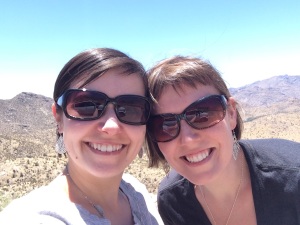
It is wonderful to be able to visit so many different places and see important people in my life. I am so thankful that my job allows me to do this, and I resolve to live life to the fullest in FY2015. - Bonus Resolution: (Can’t You) Read the Signs. I accrued 77 nights in hotels on BWF-related business in FY2014. That’s over 20% of the year! Throughout these stays, I noticed a theme of unnecessary signs/notes placed in hotel rooms and started taking pictures of them. Since my count of hotel stays will only increase in FY2015, I’m committed to capturing and sharing these humorous signs for the enjoyment of myself and others. Here’s my FY2014 collection (I’ve even titled them):
A/C Dissertation:
Elevator Party Denied:
Need a Haircut?
Passive Aggressive Soap:
Cause and Effect:
Tri-APRA
Friends, family, and fellow researchers: conference season continues! In the first three weeks of May, I had the opportunity to speak at not one, not two, but three APRA chapter spring conferences. At each conference, I met a great group of local researchers, presented on some fun topics, and had a fair amount of travel adventures.
My Tri-APRA tour took me to Columbus, Ohio on May 1-2; St. Paul, Minnesota on May 6; and Lansing, Michigan on May 16. Before I go any further, I’d like to thank OPRN, APRA-MN, and APRA-MI for putting on wonderful conferences, and for inviting me to be a part of each one. It was a crazy three weeks, but I had a great time talking shop with all of you.
Here I am in action! Thanks to APRA Michigan for the photo:
The adventure begins….
Ohio Prospect Research Network
Dates: May 1-2
Location: Columbus, Ohio
My presentations: Raising the Profile of a Researcher, Implementing Analytics from a Research Perspective (descriptions below)
- Raising the Profile of a Researcher
If you’re in prospect development, you’ve probably attended a decent amount of conference sessions that discuss how to best partner with frontline gift officers to do your work effectively and efficiently. But what about your relationship with your senior leadership team? Can you position the work you do with frontline gift officers to influence change within your organization? Are you able to synthesize your experiences working with staff to articulate patterns and develop recommendations, and are your recommendations heard? This workshop focused on best practices in building a relationship with a senior management team, and provided recommendations for making the most of the unique positioning of prospect development teams within organizations to improve fundraising efficacy at a micro and macro scale. I discussed real-life examples of how this has worked for me, and I also led a group exercise that helped attendees focus on delivering outcomes first and process second.
- Implementing Analytics from a Research Perspective
Regardless of whether your shop develops analytics in-house or outsources, research teams are the primary consumers of this data. We are often asked to overlay predictive modeling scores with wealth screening data and develop thoughtful strategies around verification of results and assignment of prospects into the appropriate portfolios. How do you make sense of all of this data? The workshop focused on strategies and best practices for implementing a predictive modeling project through thoughtful and comprehensive segmentation. Participants left the workshop with a clear understanding of key components of an acquisition project including how to define the project, preparing for success, obtaining buy-in from front-line staff and leadership, and establishing accountability.
Conference highlight:
OPRN knows how to throw a conference. This was a full, action-packed two day affair, with a Friday morning keynote by APRA’s president, Karen Isble. I was unable to attend Karen’s presentation as I had a previous work commitment; otherwise, that certainly would have been the highlight of the conference for me.
Instead, my work obligations ended just in time for me to sneak back in to hear Chris Brakenbury of The Ohio State University lead a great session on prospect management. Chris leads prospect management efforts at Ohio State and walked us through the department’s recent changes. This was a content packed session, and Chris was kind enough to share his prospect management materials with attendees.
Another conference highlight is getting to meet people you generally only interact with online. I got to meet Ginger Cole from Lexis Nexis! Ginger was my Lexis rep since I subscribed to the product back in 2006. I’ve been getting emails from her for years. It was great to see her and talk with her face to face. This is one of the great things about conferencing (or maybe a’conferencing is better?) – please make sure you take the opportunity to meet your reps, people you talk with on the L, etc. when you go to conferences.
Non-conference highlight:
Confession: I like ice cream. A lot. BUT, I don’t eat chocolate (WHAT? Yeah, I know. It’s a thing.), which means that many of the traditional ice cream offerings are not available to me. Rocky Road? Nope. Mint Chocolate Chip? Nada? Double Fudge with Oreos? (Is that even a flavor?) Sounds disgusting. Fortunately for me, Columbus is home to the BEST ice cream shop of all time, Jeni’s Splendid Ice Creams! I first discovered Jeni’s in 2004 on a trip to Columbus and have been hooked on this hard-to-find ice cream ever since. Jeni’s boasts some creative and delicious non-chocolate options such as wildberry lavender, pistachio and honey, and goat cheese with red berries, if you’re into those sort of things (and I am!). I could devote the rest of this blog to Jeni’s ice cream (and every blog thereafter), but then I’d have to rename the blog, which seems like a lot of work.
The OPRN board gave me a Jeni’s gift certificate for my troubles and use it I did! My favorite flavor: Cultured Key Lime Pie Frozen Yogurt. If you threw a Star Trek reference into the name of this froyo, it would be absolutely perfect. Anyone who wants to try and persuade me to speak at a conference in the future, throw in some Jeni’s and you have a deal!
Date: May 6
My presentations: Prospect Identification Strategies, Board Prospecting: A Case Study
- Prospect Identification Strategies
Today’s research shops are being asked to identify prospects for initiatives that exist far outside the scope of your traditional prospect base. I discussed the following: methods and tools for prospecting in new interest areas, factors to consider when capturing new interest areas in your database, and strategies to expedite capacity ratings when conducting initial proactive research.
- Board Prospecting: A Case Study
I co-presented this session with Matt Hewitt from Concordia St. Paul. Some of you may recall Matt Hewitt from my third blog post, Minnesota Nice. Matt and I walked through a project we worked on last fall, when Matt was asked to look for some suitable board candidates to present for nomination to the board. Matt created an affinity score to prospect within his database for these names, then he and I walked through some research tools to verify information on them. We blended small-shop and large-shop examples in this presentation (I used examples on board prospecting from when I worked at University of Chicago), and had a great conversation with attendees. Also, this was my first presentation experience using Prezi, which made me feel hip and cool.
Conference highlight:
You may recall that I attended APRA Minnesota’s fall conference featuring Chris Pipkins and Lisa Howley (I covered this conference in Minnesota Nice). Being asked to speak at the conference this time was like coming home. I got to see my good friend Debbie Mueller, who is a past president of APRA. If you’re keeping track, I’m now 2 for 2 on catching up with APRA presidents at these spring conferences. What talented and amazing people work in our industry! Another highlight, thanks to my co-presenter and a number of other conference attendees, I learned a lot about Lutherans in Minnesota.
Non-conference highlight:
I experienced my first suitcase casualty as my trusty suitcase (from several years before I started this job) lost a wheel once I landed in Minneapolis. Since I wasn’t in the mood to lug a one-wheel suitcase around, I headed straight to (where else?) Target and got a new one. Meet Zippy!
Date: May 16
My presentation: It’s All About Who You Know
- It’s All About Who You Know
Once you identify capacity among your prospect pool, the next step for prospect development professionals is finding the connection between your prospect and your key board members and volunteers. This session explored some tools, both free and paid, that attendees can use in their shops to uncover and visually represent these relationships.
Conference highlight:
APRA Michigan features people from all over – you’ve got the Ann Arbor crowd, the Lansing crowd, and the western Michigan people, but then you have the UP-ers. They live really far away! Traverse City is pretty far up there, too. It was really exceptional to see people who drove so far just to network with their fellow prospect development professionals. The APRA Michigan group definitely made me feel at home in my time there.
APRA Michigan also featured a panel of fundraisers. I really enjoy it when frontline and non-frontline fundraisers are able to learn from one another and share experiences in an open space. Thank you to APRA MI for all the effort it took to put this together!
Non-conference highlight:
There aren’t enough words to describe the craziness that surrounded this conference. I was flying in from Phoenix to Lansing. “Ummm?” You ask. Yes, this:
1,941 miles, according to Siri (ps: check out my Vital Stats for my up-to-date mileage and conference counts). Step one was flying from Phoenix to Chicago. That flight was delayed about 45 minutes, so I landed at 9:04pm. Step two was flying from Chicago to Lansing. That flight was due to leave at 9:01. Sigh (I later learned that it was cancelled altogether). I wanted to earn Tri-APRA status, so I rented a car and tried to get excited about my middle of the night four hour drive. Oh, I forgot a detail. I brought a passenger along with me! I met a woman on my plane who was also trying to get to Lansing. We had a lovely time getting to know one another on our trip, and I got into town with enough time to catch a couple hours sleep before waking up and heading to the conference. I was very tired, but had a great time.
Epilogue
It was a crazy three weeks, but I really enjoyed my midwestern APRA travels. I hope you enjoyed reading about them as much as I enjoyed participating! If you have questions about any of the presentations I gave, drop me an email – I’m happy to discuss further.
Finally, one cool thing about presenting is that you get APRA swag. In addition to being an honorary member of all three APRA chapters (that’s my current requirement for speaking at an APRA chapter event), I was presented with some very lovely gifts for speaking. Here’s all my swag!
Jetlag
It’s milestone time (again), friends! As many of you know, I was in Hong Kong earlier this month at the CASE Asia Pacific Advancement Conference. What an amazing experience and a whirlwind of a trip. A ton of amazing things happened and I can’t wait to write about it all here, but first things first:
JETLAG
Hong Kong is a looooooooooong ways from DC. 8300 miles and 12 hours ahead, to be exact. I did NOT adjust well. For the majority of my four day stay, I. Was. Sleepy. I was ready for bed every night by 8pm, and I couldn’t shake the feeling each day by 4pm that I pulled an all nighter. Frequent world travelers: you have my deep appreciation. Please drop me a note and teach me your secrets.
So now I’ve given the caveat that I sleepwalked through my entire HK trip, here’s some of the awesome stuff that happened:
Acapelicans
I was raised on a capella music and sang throughout high school and college. Imagine my delight to see an a capella group at the opening ceremony of the conference! The Acapelicans from University of Sydney were on an Asian tour, and they stopped in to serenade us. It was such a treat! Here they are:
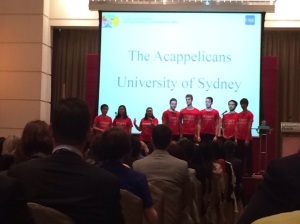
Fundraising Frontiers
On the other side of the world, our colleagues in advancement are breaking new ground. The collaboration at this conference was a breath of fresh air. Not that we don’t have collaboration at conferences in the States, but it’s different. Consider the facts. In the US, we’re all operating from a common playbook. Tax laws here are the same. The culture of philanthropy is shared. Privacy laws are relatively laid back. Fundraising professionals in Australia, New Zealand, and Asia face basic challenges around many of the factors that are business as usual in our world in the States.
Here’s an example by way of illustration:
1. Let’s say you’re the director of development at a secondary school in Australia. You’re planning a trip to Hong Kong (for the CASE Asia Pacific Conference, of course), and you need to locate your alumni living in the area to invite to a dinner while you’re in town.
2. You might start by pulling a list that includes: alumni who went on to attend colleges in Hong Kong, alumni whose last known address (business or home) is in Hong Kong, alumni who may live in Macau or another area that isn’t too far of a drive/ferry trip from Hong Kong. Locating updated addresses on individuals will be quite a challenge, especially considering how many countries you may have to include in your search.
3. Once they are found, how do you identify which alumni have the greatest potential to be major supporters of the school? Capacity information is hard to locate due to privacy laws, so you’ll probably want to mine your database for internal clues, or you’ll just send out a blanket invitation to all contactable alumni that were on your list in step 2.
4. Let’s skip ahead. You had a small but mighty turn out for your event, and you are strategizing next steps for the attendees. How do you motivate this select group to stay involved and eventually donate? There aren’t tax laws incentivizing them to support you. How do you keep in touch when you’re navigating so many different countries, laws, languages, and customs?
That was just one example, but it gives you an idea of how hands-on and practical this conference is. Attendees were excited to be there and were looking for concrete takeaways to implement in their shops. I got emails following the conference from a few individuals who attended my session and were able to implement some takeaways from the ideas I presented. I am thrilled to know that I was able to provide useful, tactical information, and I definitely got some great information out of the sessions I attended.
The Peak
By Friday afternoon, the bulk of the conference was over, my jetlag had mostly faded, and it was sunny for the first time since I arrived. I decided to seize the moment and take a trip up to the Peak. The Peak is a tourist destination/ sightseeing spot in Hong Kong. You have to take this tram up a really steep incline to get there, so steep that it makes you feel like the whole tram might topple over if someone onboard sneezes too forcefully. And you have to wait in line forever for the tram. But once you get there, you are on top of the world. It is so beautiful! Hong Kong is surrounded by water, so it looks like a private oasis when you look at it from the sky:

Milestones
I passed a few milestones this trip that I’m excited to share.
Passport ready: This was my first international work trip and my first time in Asia. While I could have navigated the jetlag better, I really enjoyed my stay and learned a lot about the challenges of fundraising in other countries.
Status: Several things make the life of a frequent traveler easier. Among them: TSA precheck, luggage with four wheels, and upgraded airline status. This trip got me to MileagePlus Premier Silver Status on United. I haven’t flown with United since then, but when I do, I’ll be sure to report back on whatever magic I experience by being bumped up one tier. I’ve still got a ways to go before I make it into the “drop everything, Bond is on this flight” category (I realize it has an official name like diamond or eternity, but isn’t mine better?).
Batter-up: BWF has a tradition of giving all new employees a baseball bat with your name on it when you start at the firm. I was due to receive mine at our all-firm meeting in January, but the horrible winter took its toll and the bats weren’t yet ready. My first day back in the office after returning from CASE Asia Pacific I found this waiting for me:
Now I’m officially part of the team!
Covering Ground
Friends, it is celebration time! This week, I earned some significant consultant airport cred. Since beginning this job at the end of September, I have cleared the 50,000 miles flown mark! Check out my Vital Stats page to see the exact number.
This week represented one of the crazier ones I’ve had since starting this job, so I figured I’d devote this post to describing a “week in the life.” Here are some of the highlights of my week (Sunday, March 23-Saturday, March 29):
States:
7: Illinois, Missouri, Virginia, New York, North Carolina*, Arizona, Texas*
*Didn’t leave the airport
Time Zones:
3: Central Time, Eastern Time, Pacific Standard Time*
*Arizona doesn’t fall back/spring forward; it’s in the Mountain Standard Time zone. From November until March, Arizona is in the same time as its mountain state friends like Utah and Colorado. From March until November, Arizona is hanging out with California and Washington, who are in Pacific Daylight Time.
Work Life Balance:
In the consulting world, it can be hard to find time for a personal life. This week, I got to see family and a good friend during my travels. My client on Monday was in St. Louis, which is only about three hours from my home town of Bloomington/Normal, Illinois. I flew in on Saturday morning and drove up to Bloomington for a visit. I stayed with my mom:
I also got to see my brother and his family. It was a quick trip, but I’m so grateful I got a chance to spend some time with them during an otherwise hectic time.
My client on Friday was in Phoenix, which is only a couple hours from Tucson, where a good friend of mine lives. Once I was done on Friday, I hopped on the Arizona shuttle service to go from Phoenix to Tucson. The shuttle is very convenient, and it was great to be able to see the beautiful scenery in Arizona along the way. I enjoyed a great dinner in downtown Tucson with my friend and a great breakfast the next morning before heading to the airport to get home. Again, it was a very quick trip, but it’s a trip I wouldn’t have made were it not for this job and my client in Phoenix.
The (Mis) Adventures of a Consultant:
When you travel a lot, crazy things happen that are hard to predict. They keep life interesting and make for good stories. Here are a handful of stories from this week:
- Bathroom break: (This actually happened at the end of last week, but it’s a good story so I’m promoting it to inclusion this week) Beware the bathroom doors on tiny planes! On my flight to St. Louis, I sat in the back of a tiny plane with only one restroom on board. Thirty minutes before we landed, I went into the restroom and locked the door. When I tried to leave, I couldn’t get out! The door was partially jammed at the bottom. I tried for about five minutes to free myself and then I pressed the attendant call button (I guess they put these in the bathrooms for a reason). The flight attendant came with some sort of apparatus and managed to pry the door open. Clearly this wasn’t the first time she’s rescued someone.
- Presidential crasher: I began my misadventures in true rock star fashion on Monday. My client was a relatively small school about 30 minutes outside of St. Louis. The Alumni Relations and Development Department is housed within Alumni House, which looks a lot like a regular house. I have been there once before, but it was a couple months ago, so I was fuzzy on the details. I walked up to the house and it didn’t quite look right, but I remember walking up to the first house after the street I parked on, so I kept going. I was right in the middle of campus, so if it isn’t Alumni House, I’d know the minute I opened the door. At worst, it was some other campus facility and I could ask for directions. I opened the door and found…a dining room. And pictures on the wall. Uh oh. This wasn’t a campus house. This was a private residence. A curiously open private residence, but someone’s home nonetheless. I immediately walked away and headed towards the next house I saw. Within 30 seconds, an alarm started going off. I told my clients about my accidental trespassing when I got to the actual Alumni House and they informed me it was the President’s house. Good thing he wasn’t home!
- Things they shouldn’t fry: Once I settled into my hotel in Rochester, New York, it was dinner time. I perused the menu and saw something called a Xango. Here is the description: “deep fried cheesecake served with vanilla ice cream and fresh berries.” Is this a New York thing? Can anyone enlighten me? Here’s what it looked like:
While bananas don’t exactly qualify as a berry, and it was more like a cheese blintze/eggroll fushion, it was delicious. Thank you Rochester for giving me something totally unexpected.
- Pet adoption center: My Friday client is in the animal welfare world. On our lunch break, we toured a local pet adoption center. There were so many adorable and sweet animals there. My own cats are shelter pets, so this is a cause with which I identify. In case you were wondering (I’m almost sure you weren’t), here are my cats, Data and Lore:
- Too close: Saturday my journey ended and I headed to the Tucson airport. I saw what is now becoming a familiar message: flight delayed. I had a 45 minute layover to transfer planes in Houston, and the delay was 30 minutes. I didn’t like my chances of sprinting through the Houston airport, so I asked the gate agents to reserve me a spot on a later flight. Once I landed, I checked the board – final call for the earlier flight. I booked it and got to the gate as the agent was checking in the (second-to-) last passenger. I looked for my phone to show her my mobile boarding pass, and couldn’t find it in my purse. Panic! Did I drop my phone during my sprint? The gate agent asked for my name and was aggressively ushering me in before the door closed. I knew I had a seat on the later flight, and I definitely didn’t want to leave without my phone. Should I stay or should I go? I emptied the contents of my purse and found my phone. Phew! I loaded everything back in and walked down the jetway. A few minutes later, the gate agent appeared. What had I done wrong this time? I looked down. She was holding my wallet. Gulp. As bad as losing my phone would have been, leaving my wallet in the Houston airport two days before an international trip would have been worse. The next day, I bought a purse with a dedicated phone holder and a full zipper at the top.
Next week: Hong Kong!
Some of my Best Friends are Overhead
What a week it’s been! After almost a month of in office work and a local conference, I packed up my 3-1-1 compliant bag and hopped on a plane to Boston. I coordinated a client visit in Wuh-stah (curiously spelled Worcester) with the NEDRA conference in Boston for a delightful three day excursion in New England. Before I get to my key observations on this week’s topic, I have some thoughts about the Wuh-stah/Bah-ston region as a Midwesterner:
- There are a TON of schools! Not just in Boston. There are 12 higher ed institutions in Worcester! My hotel was five miles from my client site, and I passed one higher ed institution on the way to my client (also higher ed). Amazing! I wonder if New Englanders are surprised when they go to towns where there are more McDonalds than colleges.
- Mile markers and exit numbers are totally unrelated in Massachusetts. You’ll be at mile 63 and you need to get off at exit 22. In my world, that means you have 41 miles to go (unless you’re changing highways or crossing into a new state). Yet Siri tells you you’re four miles from the exit. WHAT CRAZY MATH IS THIS?! Oh, it’s not math. There is no correlation between these two items. I have mentioned before that my dad is a transportation planner (hi, dad!), so I take highway logic very seriously. Can someone explain what is happening? Does this exist elsewhere in the US?
Observations aside, both cities were picturesque and I had a wonderful time. I stayed in a fancy hotel in Boston for the conference:
At the end of the week, I relocated to Boston for the New England Development Research Association’s annual conference, Strategies for Success. NEDRA is a super-charged APRA chapter that includes all of the states in New England.
NEDRA was able to recruit Dan Pallotta as the keynote speaker. Dan was instrumental in creating the AIDS Rides, Breast Cancer Walks, and the Out of the Darkness suicide prevention walks in the 1990s. His most recent work has been to establish the Charity Defense Council. This is an organization that was created to “change the way people think about changing the world.” Dan explained that nonprofits are constrained by outdated rules in their efforts to create meaningful social change, rules that don’t apply to businesses. The primary challenge that Charity Defense Council is combating is dreaded Overhead Factor, or the idea that nonprofits must demonstrate that more than 75% or sometimes even 90% of what they spend goes towards direct service costs rather than administrative ones such as salaries or office equipment. Dan said this is dangerous for three reasons:
1. It makes us think overhead is not part of the cause. I don’t know about you, but when I worked as a development associate at a housing facility for homeless teens, I needed a computer to do my job. The Overhead Factor declares that the electricity required to run my computer should be labeled separately from the electricity required to run the computers in the homes of the teens the organziation housed.
2. It forces charities to forgo what they need to grow. Low overhead is fine if your organization plans on raising the same amount year after year. Is that a goal that any of us have? If we want to achieve loftier goals, we need to raise more money, and to do that, we need to invest in capacity building opportunities.
3. It gives donors bad information. I went shopping today and tried on two pairs of pants: one for $4.88 and one for $40. They had a lot in common: same brand, same size, same color. When I tried them on, the $4.88 pair felt and looked horrible. If I were making my decision on price alone, I would have been disappointed. Judging nonprofits based on their overhead expenditures alone does the same.
Dan’s speech, and the mission of Charity Defense Council, gave me a lot to think about. It made me proud to work in (and now for) the nonprofit sector. I loved the idea that we are reclaiming our missions by declaring that we owe it to society to put as much effort into preventing homelessness as Dairy Queen puts into selling ice cream. The most striking part of Dan’s message was when he revealed Charity Defense Council’s ad campaign:
Be on the look out for ads like this in print, online, and on TV soon. If you agree with the mission, consider becoming a member. What do you think? Are you overhead?
Bucket List: Faculty
We’ve all got the list somewhere- in our brain, on a sheet of paper, saved on a floppy disc sitting in a box in the back of our closet. Maybe there’s an app for it. I’m referring to the evolving list of what we wanted to be when we grew up. Here’s how mine went:
- 5 years old: veterinarian
- 12 years old: archaeologist
- 15 years old: anthropologist
- 18 years old: sociologist
- 20: sociology professor
- 22: “something to do with nonprofits”
- 25: prospect researcher
The rest, as they say, is history. Since the age of 15, my ambitions have been geared towards understanding people and/or helping them. For awhile there, I thought it could be great to teach college students theories behind observing and understanding people. To be honest, that ambition has never fully gone away. In the back of my mind, I’ve always thought it would be great to pursue a second career in teaching later in life (much later).
This week, I got to realize a bit of that dream. I served as faculty for the CASE Development Researchers Conference in Baltimore, MD. This was an amazing experience. Don’t get me wrong, it was exhausting. All the prep work leading up to the conference was hard work. Being “on” for three days straight was mentally challenging. Post-conference catch up on everything I couldn’t get to earlier in the week was rough. But it was all immensely worth it.
For those of you who aren’t in development (hi Mom and Dad!), CASE is an organization devoted to advancing excellence in higher education institutions, mainly through conferences, webinars, studies, articles, etc. They do a lot of work in the areas of marketing/communications and development (fundraising). This is their annual conference devoted to prospect research, prospect management, and analytics professionals. Since almost all attendees are from higher education institutions, the topics covered can be a bit more targeted (no need to discuss HIPAA laws or prospecting for donors for the dinosaur exhibit). It is purposefully a smaller audience (75 attendees), and is set up so the same four people talk the whole time, with the exception of a guest co-presenter and a couple high-profile keynote speakers.
In a normal conference, you might have 15-20 sessions in a three day span put on by 15-30 people; in our conference, there were 15-20 sessions put on by seven people. There are some benefits to doing it this way- the conference planning is easier since you don’t have to coordinate with 15+people, and the conference has a more cohesive theme to it since you’re listening to the same people throughout. If you are in the industry and you’ve never attended, I’d encourage you to consider this conference next year. It was my first conference as a new researcher back in 2006 and I still remember it. Here’s proof that I was there (I just unearthed this from a box this morning!):
To quote prospect researcher extraordinaire Catherine Cefalu (follow her blog here), I genuinely nerded out over many things at this conference. Here are the highlights (get ready for lots of hyperlinks!):
Faculty: this group was top notch. I’m honored to be considered in the same sentence as them. Roslyn Clarke is assistant director of research at Harvard. I’ve known some great financial industry researchers in my day, and Roslyn is absolutely in that category. The woman will go to the business library at Harvard and read the footnotes in hedge fund compensation books, taking crazy notes because you aren’t even allowed to photocopy some of this stuff! On top of that, she can talk about it to a crowd of people in terms that make us all understand. Considering a lot of us in prospect research are soft-science folks, that’s quite an accomplishment!
Bernardo Villasenor is director of prospect management at Emory University. Bernardo’s brain is three steps ahead of the rest of us. This is a common trait for big data/analytics people, and Bernardo is among the most skilled I’ve ever worked with. I can see his brain working towards a solution before the rest of us have even realized there’s a problem. For example, He would probably look at a unit dashboard report and think through ways to efficiently deploy their development officers in a different area of the country before I’ve even figured out what the X and Y axis of the dashboard are reporting on. Bernardo and I co-presented a session on relationship mapping where he worked in the terms “homophily” and “heuristics”; meanwhile I showed attendees how to google someone’s Bacon number.
Chris Pipkins is AVP of advancement information services at James Madison University. Chris was responsible for pulling all of us together for this conference and was the ultimate cool guy conference chair. Nothing phased him (except maybe completing his PowerPoints). Chris has managed the research team at JMU for a long time, and has done an amazing job integrating the work of his various teams. What’s great about having someone in a leadership role that understands data at the helm of a conference like this is that he realizes that the content needs to focus on the interpersonal dynamics of the work place, not just the nuts and bolts. Chris used a great slide about mistakes:
The point is that you can’t be afraid to make mistakes. Sometimes leaving a major data point out sparks conversation, and those conversations are what actually moves business forward. Perfection is the Achilles heel of many a researcher, so this was a valuable lesson.
Keynotes: David Lawson (NewSci) and Rob Scott (MIT) were each on hand for a keynote address, and they participated in a Q&A session with the rest of the faculty. What a range of expertise and advice both of these guys have! David talked about how we need to make big data our friend, and Rob spoke about research’s role in a campaign. It was wonderful getting to know them both, and I think they added a ton of value for the conference attendees.
Attendees: what a great group! We had people from small schools, large schools, secondary schools, and even someone from a museum (I had to dust off my dinosaur exhibit prospecting tips, after all). There were even attendees from Hawaii and South Africa! In talking with attendees, it was great to hear what everyone is doing. There are some things we are all struggling with (prospecting for interdisciplinary initiatives, devoting more time to proactive research), and other things that some universities are doing really well (relationship mapping, partnering with our frontline counterparts). If you’re reading this and you attended the conference, please feel free to comment about what you valued the most at the conference. Follow me on twitter (@lammeyb) and connect with me via LinkedIn and we can keep the conversation going. Don’t be a stranger!
Food: on Sunday night, we had a core faculty dinner at Fleet Street Kitchen, a farm to table restaurant in Baltimore. It was incredible. Here’s a picture of my dinner:
I’m not sure what the cube in the upper left hand corner was, but otherwise the meal was amazing. If you’re in Baltimore and you’re feeling fancy, go there!
On Tuesday night, we had an expanded faculty dinner at Nick’s Fish House. We hit crabs with mallets and I ate with a napkin tucked into my shirt. Here are our victims:
I am generally anti working this hard for food, but there is something soothing about pulling a hammer out of a bucket and attacking an already seasoned shellfish. And nothing is more enjoyable than wearing a bib-napkin in front of professional colleagues.
CASE staff: you may not know Jennifer Lichty, but you should. She is amazing. She put us all at ease. She made sure we had everything we needed at the conference. I know she loves her social media crowd, but I’m trying to show her that researchers are a fun group too, and I think she might believe me after this conference. I’d like to grant her “honorary researcher” status. Anyone else second my nomination, or should we make her prepare a sample profile first?
This post could now be a chapter in a book, so I should end here. I have so much more to say and so many more things to nerd out about. If you attended the conference and you have favorite moments or food pictures, please put comments here! If you want to talk more with about the conference, drop me a direct message on twitter or email me.
The Easy Button
Happy March, friends! I’m sitting in a hotel room in Baltimore as I write this, listening to the local news anchors talk about the snowstorm outside. I suppose wishing you all a happy spring might be a bit premature…
It’s been awhile since I posted. I have made updates to the Vital Stats portion of my blog and am less than 4,000 miles away from surpassing 50,000 miles flown. Since I have a trip to Hong Kong in the near future, I’m confident I’ll have a celebratory mileage post soon. Also, I’d like to welcome a special new reader to my blog – my mom! She caught up on all my posts during the snowy days of February (she must have been really bored…) and was excited to read more.
I had a very busy February – I spent a full week in Seattle (including a very exciting Valentine’s Day), then turned around and went back to Oklahoma City to see not one but two clients. All of these were return visits to see clients I’ve already worked with, which means we were rolling up our sleeves and getting into the meat of these projects. Any of you who have been working on a project for several months can identify with this. You start asking all of the messy, tough to answer questions:
- What do we do with prospects who give to multiple areas of the organization?
- How do we use our predictive modeling results to identify prospects for a new initiative?
- How do we leverage the connections between our individual prospects and their employer organizations, which are also prospects?
I wrestled with some of these questions during the full week with my Seattle client. It was only fitting that I saw this when I sat down at the temporary cubicle that would be my workstation for the week:
I pressed it, and guess what happened? NOTHING! How’s that for a metaphor? This stuff isn’t easy, friends! It takes hard work. Even with the best of project plans, something unexpected will come up and we’ll have to figure out how to continue on in spite of the newest curveball. Your development office’s budget might be cut by 5% for the fiscal year. Your VP might suddenly resign. Key members of your team might take a new job or get assigned to a new project.
So what do you do? I mean, what do you do after you’ve had your pity party and crawled under the blankets, crying? Hopefully I’m not the only one who does that… Allow me to suggest that you prepare for projects the same way that game show contestants prepare. In fact, the easy button looks a bit like a contestant’s buzzer.
3 Tips for Project Planning like a Game Show Contestant
- Pre-project: Study. No one goes on a game show without doing some preparation first. Okay, some people do, like on The Price is Right, but if you’re going on Jeopardy, I can guarantee that you spent some quality Saturday evenings with a deck of flashcards. Do we prepare like that for big projects? I have a client who wrote out a script prior to a portfolio review meeting with a gift officer. Working on that script was tough. We had “if, then” statements all over it. But at the end of the day, the review went smoothly, we were prepared for all possible outcomes, and we had a working script to use for all future portfolio reviews. Our hard work paid off.
- During project: Phone a Friend. Who Wants to Be a Millionaire offers contestants the option of using lifelines if they don’t know the answer to a question. They can choose to eliminate some of the false answers, poll the audience for the answer they think is correct, or call a friend that they trust to ask what answer they’d go with. Why wouldn’t their friend just be on the show instead? I digress. In the phone a friend example, their friend knows a lot about the subject and generally has helpful advice. The same is true for development. There are very few totally new ideas in fundraising. Chances are, if you’re working on a big project, some other organization has done something very similar, and has executed it well. Why reinvent the wheel? Do you have connections who can help walk you through it? Call them up. Or post to a message board like PRSPCT-L – the development community is very friendly and you can usually get some great ideas from message boards.
- During project: Play to Win. Unlike awards show nominees, no one goes on a game show and says that it’s an honor just to be chosen to play. No way! If you make it onto Wheel of Fortune, you play to win. That explains why contestants choose to spin the wheel one more time when they should just solve the puzzle. They always end up landing on bankruptcy or losing a turn. Sometimes you have to take big risks to win big. In fundraising, we can be happy for our colleagues that landed that $100 million gift, but that doesn’t change the fact that we want to see our organization land some large, impactful gifts too. That might mean we need to take a risk and put a crazy idea in front of a major donor. It might mean we need to reorganize the way our shop is set up. It might mean we nominate someone for the board who isn’t connected to any of our other board members. One strategy might land us on the “Lose a Turn” space, but our strategy on our next turn could result in a major gift.
What do you think, friends? Have I taken the metaphor too far? What do you do to prepare for the unexpected?
All game show images are from Wikipedia, which contains an impressive amount of information on game show history, rules, and formats.
Until next time, friends. Conference season is kicking off this week as I am on faculty of the CASE Annual Conference for Development Researchers. I’m looking forward to meeting all of the attendees and am excited to write about it afterwards.
Two Life Lessons in the World of Bond
Happy frozen tundra, friends! If you are reading this and it’s above 10 degrees where you live, congratulations! The rest of us are cold and miserable.
I was working on my post for last week, when I realized that it is somewhat related to my post for this week. Therefore, I’ve decided to combine the two. In the last two weeks, I’ve learned two important lessons about the consultant lifestyle. Clearly these are not unique to my experiences, or even to consultants alone, or even to anyone who travels. I’m certain we all have faced these life lessons before.
1. Last week, I learned the importance of going with the flow. In the span of one day, I confirmed a tentative trip for the following day, while simultaneously contacting our travel person to set up a trip less than one week later (as I compose this, I am on a flight returning from the second trip). I had actually packed for a one- or four-day trip when I left home last week as I had no idea how long I’d be gone.
The unexpected can really stink sometimes, like when there’s no internet on a five hour flight so I can’t get any work done, but I try to look on the bright side. Maybe I really needed a five hour nap (Or I really needed to see the inflight movie. Or I really needed to work on my PowerPoint slides. You see where I’m going with this). Sometimes life throws you some curveballs and you have to either go with the flow or spend a lot of energy getting upset about it. Personally, I think it’s important to not take yourself too seriously and try not to get too upset. In the words of Ferris Bueller, “Life moves pretty fast. If you don’t stop and look around once in a while, you could miss it.”
Anyway, going on the tentative trip ended up being a really good idea for the sake of the project and my understanding of where we need to go, so hooray for the unexpected!
Enough of the happy, puppies-and-kittens perspective. What other life lesson have I learned?
2. Getting lost is inevitable. I see how you might assume I’m being metaphorical with this one. Nope, I mean literally getting lost. I have gotten lost at least four times in the last two days. I’m pretty sure I’ll get lost at least two to three more times before the end of the week. Some are totally my fault, like when I clearly took the wrong turn on the way to BWI and ended up in a hospital parking lot (I was just supposed to merge onto another interstate), or when I almost didn’t make my flight because I was one gate away and didn’t hear the announcement (this is a stretch in the category of getting lost, but I wanted to give you ample opportunity to laugh at me. I travel for a living. You assume I’d have figured out how to make it onto a flight when I’m 200 feet from the gate).
My other getting lost stories are the fault of my mapping technology. I took a wrong turn and ended up driving the streets of East St. Louis. Twice. “Gasp!” says everyone who knows St. Louis. I could expound on the shortcomings of my mapping technology, but I’m still a fan. It makes my life so much easier, and these types of situations are mostly laughable. And mostly still my fault for failing to use my logic chip to override a map which is clearly taking me through a shady part of town. On the plus side, I snapped this photo of the Arch:
To mirror my commentary after my first life lesson, the takeaway from this lesson is to keep your cool and keep perspective. You might get to take a cool drive-by picture of the Arch, or you might discover a hospital complex in Maryland that you didn’t know existed. When you get lost, you just have to calm down and look for another route. In the words of Douglas Adams, “Don’t panic!”
Several months ago I was driving through Oklahoma City and I failed in at least three attempts to get on the highway (it was right there but I couldn’t find the entrance ramp!). Instead I took a local road to my hotel and discovered a cool part of town that looked like it had been preserved in the Seventies. While it wasn’t as exciting as the time I watched the sunset over the Santa Cruz mountains while driving over the San Mateo Bridge in San Francisco, discovering this forgotten neighborhood in Oklahoma City was a “feel good” moment for me; one that was completely accidental.
In the past few weeks, I’ve learned that the unexpected and unplanned events can sometimes end up being the best ones.
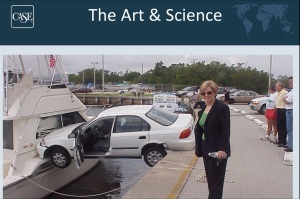
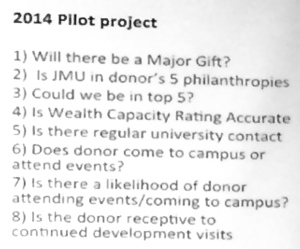







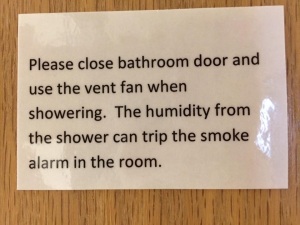


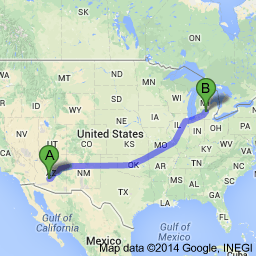




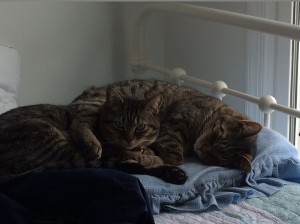

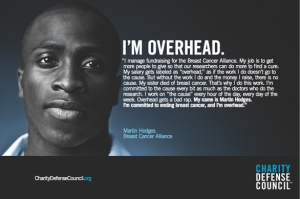


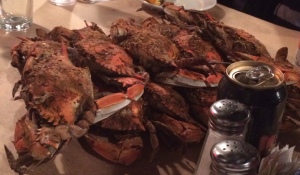






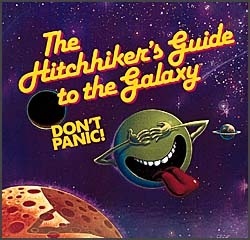
Recent Comments